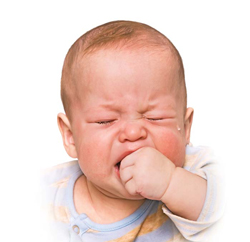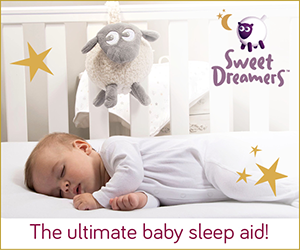Crying & Colic

Traditionally, colic is defined as continual or persistent crying without any apparent reason, typically lasting more than three hours per day, more than three days per week for at least three weeks. It usually begins at around two or three weeks of age, and subsides on its own by twelve weeks. Babies with colic were described as having prolonged bouts of intense, high-pitched crying. Some infants draw their legs up and clench their fists, as if in pain. Spells of crying tend to occur at around the same time each day, often in the early evening. Babies with colic may be inconsolable; nothing their parents do seems to soothe them. In spite of persistent crying, these babies do not have any apparent symptoms of illness. However, when we now look at the latest studies on babies’ crying habits we realize that colic and the PURPLE period of crying, coined by Developmental Pediatrician Dr. Ron Barr, are really the same. Actually, these classic colic
symptoms exactly describe the acronym PURPLE:
P: Peak of Crying
Baby may cry more each week. They tend to cry more at two months and then less at three to five months.
U: Unexpected
Crying can come and go, and you do not know why.
R: Resists Soothing
Baby may not stop crying, no matter what you try.
P: Painlike Face
A crying baby may look like they are in pain, even when they are not.
L: Long-Lasting
Crying can last as much as five hours a day, or more.
E: Evening
Baby may cry more during the late afternoon or evening. I refer to this as a crying shift.
During the PURPLE period of crying, parents may be relieved to find out that, however alarming the bouts of crying are, the crying itself is not a serious condition. Though these babies may appear to be in distress, they are usually in good health and are growing and developing normally. Parents should be certain, however, that the baby does not suffer from any other medical conditions that could be producing the crying. If bouts of crying are accompanied by vomiting, abdominal bloating, fever, or other signs of illness seek medical attention immediately.
The best way to approach and deal with an excessively crying baby is to assess and monitor its effect on the parents or child caregivers. During the first few months of life, we know that some babies will cry more intensely than others will; but all babies cry. If a parent is frustrated or tired, then the crying is indeed a problem. If on the other hand, despite the crying, both the baby and parents are content and happy—this is great!
Although intense or excessive crying is not a serious medical problem, it can cause a great deal of stress and anxiety within the family. Excessive crying can wear on everybody’s nerves, and can lead to feelings of parental inadequacy and constant worry. This kind of anxiety isn’t good for either the parents or the baby. It is important never to shake a crying baby out of frustration or anger. The crying is neither the parents’ nor the baby’s fault. Parents who are feeling stressed or burned out should seek relief for themselves whenever possible. They should leave the baby in the hands of a competent babysitter, and take time out for a movie, a dinner out, or just a few hours of quiet relaxation. Taking frequent breaks can go a long way toward helping parents cope with their baby’s crying.
Pediatrician and health communications pioneer Dr. Paul Roumeliotis has produced hundreds of articles, booklets and videos on a variety of child health issues. His highly acclaimed, groundbreaking book for parents focusing on the importance of the first 18 months of life, Baby Come Home, was released early in 2015. Visit www.drpaul.com and follow Dr. Paul on Twitter:@thedrpaul.




